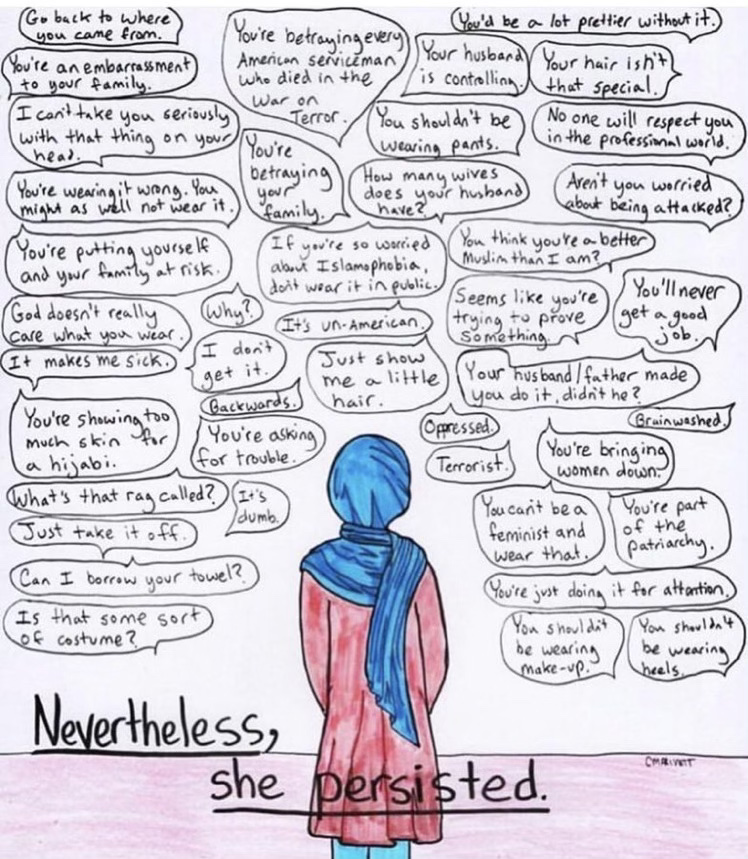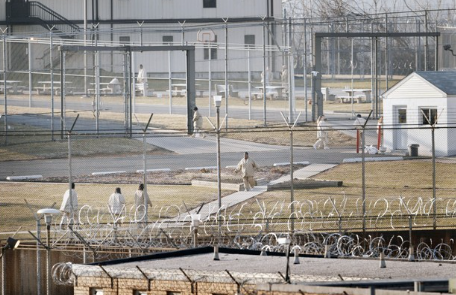A Man’s World
Given the recent attention towards Syria and Turkey and other countries in the Middle East, many stereotypes are beginning to re-emerge including the idea that all women in the Middle East are oppressed. In the American school system, much time is spent learning about the history of other foreign countries but not about their current situations. In many cases, the only information people have about countries’ norms and expectations is obtained through stereotypes and commonly known, usually false, conceptions. An example of this is the misconception that all Middle Eastern women are oppressed. Women in the Middle East, despite popular assumption, experienced, and are still going through, the same struggles as many other women around the world.
Similar to any other region of the world, women’s social status in a country can often depend on the development of that country. The Middle East, like many other parts of the world, has a collection of varying socially and economically developed countries. In less developed countries like Syria, Yeman, and Iraq, where thinking and political views are more “traditional,” women may experience discriminatory treatment by both the citizens of the country and the government itself (Chepkemoi). However, in many countries in the Middle East that are more developed, both in terms of economy and the ideology of the people of the country, women are generally viewed just as they are in any other developed country around the world. Countries that are more developed like Qatar, Kuwait, and the United Arab Emirates are great examples of this (Chepkemoi). In less developed countries where the economy is lacking and agriculture and manual labor is usually the best way to earn money, women are often seen as “not fit” for the job due to the “traditional” and old way of thinking that may be deeply indebted in certain cultures. In these countries, where healthcare is also not as advanced as it is in other countries, women are often expected to marry and have many children from a young age due to the fact that many children are needed in order to get work done and people are expected to have many children since many of them are expected to not survive past childhood childhood. With an average 46.54 infant mortality rate in Yemen, which is just under double the global average, a good portion of children born in Yemen don’t make it past the age of 1 (Yemen – the World Factbook). In spite of this, in more developed countries, where health care and the economy’s success is less of an issue, women typically have more opportunities – and it is socially accepted for them to do so – to pursue an education and careers of their own aside from caring for and developing their families.
Most women in the Middle East received rights along with the rest of the world. Although people may believe that Middle Eastern women have been oppressed their whole lives and history, women in many countries in the Middle East, along with women in many other countries throughout the globe, fought for their rights throughout the 20th century. In Egypt, the women’s suffrage movement, although it progressed at a slower pace, lined up similarly to the women’s suffrage movements in many other countries: “The Egyptian Feminist Party was founded in 1923, and the Women’s Political Party was established in 1942 to coordinate the fight for women’s equality and the revision of family law. Women’s full political rights gained recognition when Egypt won independence in 1956,” (A Background to the Feminist Movement in Egypt). In France, a country that is considered to be well developed, women won their right to vote along a timeline similar to Egypt’s: “…the measure was signed into law on April 21, 1944 under a provisional government led by Gen. Charles de Gaulle… French women did not actually cast their ballot for the first time until April 29, 1945,” (France Marks 70 Years of Women’s Voting Rights). French and Egyptian women, like billions of women throughout the world, were prompted to fight for their rights after recognizing the injustice and segregation in the place they considered their home.
Like every other stereotype – there was a reason, a root, that caused people to think that Middle Eastern women are oppressed. Oftentimes, when people think of the Middle East, a region that is dominantly Muslim, they envision Muhaajabas – women who wear Hijabs. In the Muslim faith, a Hijab “refers to a strict code of dress that covers both the hair and the curves of a woman’s body in the presence of men who are not close relatives,” (Saper). In Iran, after a series of rulers and laws that were both for and against Hijab’s – which forced women to flip flop between being Muhaajabas to being unveiled – the hijab became “a symbol of oppression that strips away their most basic human rights and the dignity to wear what they want,” (Saper). Because of this, there developed a stigma and mindset that causes people to think that ALL Muhaajabas are forced to be veiled. However, this is simply not true in most cases. Oftentimes, women who wear Hijabs – inside and outside of the Middle East – do it with pride “to identify with their Muslim faith” and as “a choice and a means of expression,” (Saper).
There were many instances where women in the Middle East were deprived of their rights. In some cases, it was for reasons beyond those that other women throughout the world experienced, like the enforcement and ban of hijabs in Iran. However, most of these countries are continuing to work to overcome pre existing segregation and inequality – like many countries outside the Middle East. Therefore, the stereotype that simply being a Middle Eastern woman means you were born into a society of injustice and a world of oppression is not true. In fact, it does more harm to the Middle Eastern community as a whole rather than “raising awareness,” as some people might think. Such stereotypes lead to other false prejudices against other people within the region. For instance, thinking that all women in the Middle East are oppressed may cause people to think that all men in the Middle East are oppressive. Women in the Middle East, just like women of different ethnicities and nationalities throughout the world, have experienced, and may still be experiencing, the struggle of being a woman living in “a man’s world.” Nevertheless, women all over the world, including Middle Eastern women, are continuing to fight for their rights.
Works Cited
“A Background to the Feminist Movement in Egypt.” NCBI, pubmed.ncbi.nlm.nih.gov/12317569. Accessed 19 Feb. 2022.
Chepkemoi, Joyce. “The Richest and Poorest Economies in the Middle East.” WorldAtlas, 1 Aug. 2017, www.worldatlas.com/articles/the-richest-and-poorest-economies-in-the-middle-east.html.
“France Marks 70 Years of Women’s Voting Rights.” France24, 21 Apr. 2014, www.france24.com/en/20140421-france-womens-voting-right-anniversary.
Hoodfar, H. “A background to the feminist movement in Egypt.” al-Raida vol. 10,57 (1992): 11-3.
Saper, Jacqueline. “Hijab: An Empowering Choice in U.S., a Symbol of Oppression in Iran.” The Seattle Times, 28 June 2019, www.seattletimes.com/opinion/hijab-an-empowering-choice-in-u-s-a-symbol-of-oppression-in-iran.
Yemen – the World Factbook. www.cia.gov/the-world-factbook/countries/yemen. Accessed 18 Feb. 2022.











